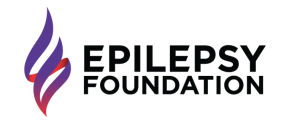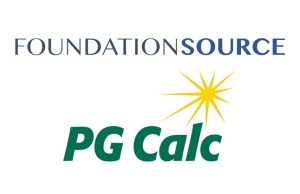The ServiceNation Summit had all the trapping of a VIP experience. There were the Hollywood stars, the top-tier politicians at a New York City venue that was covered by the major networks.
The September 11 and 12 event was headlined by both major party presidential candidates, Sen. John McCain and then senator and now President-Elect Barack Obama. It was loud in rallying bipartisan support for the Serve America Act, which aims to create governmental support for service through programs in both the public and private sectors.
Prior to the summit, bringing together Democrats, Republicans, large corporations, and a diverse population of nonprofits beneath one banner during a presidential campaign cycle was about as likely as talk radio arch conservative Sean Hannity saying something nice about comedian and Democrat Senate candidate Al Franken. Despite logistical and partisan hurdles, six executives were essential in organizing the event and galvanizing a coalition of more than 120 groups.
For their dedication toward promoting a national service agenda, John Bridgeland, president and CEO of Civic Enterprises, Michael Brown, co-founder and CEO of City Year, Vartan Gregorian, president of the Carnegie Corporation of New York, Alan Khazei, founder and CEO of Be the Change, Michelle Nunn, president and CEO of the Points of Light Institute, and Richard Stengel, managing editor of Time magazine, have been selected the 2008 NonProfit Times Executives of the Year.
The seeds of the ServiceNation Summit were unknowingly planted years ago through a series of professional a personal relationships. Khazei co-founded City Year with Brown and led the organization with him before creating Be the Change in 2007. Khazei and Bridgeland had already formed a longtime friendship when Khazei approached Bridgeland about a strategy of engaging grasstops and grassroots organizations and building coalitions around service ideas that would including potential summits designed to bring leaders together.
Bridgeland saw the parallels with a previous discussion touting national service that he held with Stengel, whom he first met when Stengel was the head of the National Constitution Center in Philadelphia. Stengel moved to Time magazine in 2006 and in August 2007 he authored a cover story for the magazine, “A Case for National Service.” That feature story became a rallying cry within the service movement.
“When Rick’s cover story came out, five of the eight presidential candidates wanted to hear more about national service,” explained Bridgeland, who had previously conducted a summit on the high school dropout issue with Stengel and Time as a presenting sponsor. “The story put community and national service in the eye of the public. That’s when I proposed to him that we do a service summit that will try to move this agenda. Our goal was to involve the presidential candidates, move legislation, get action from the governors, involve businesses, faith-based and nonprofit organizations and get commitments. Rick then said that he would guarantee another cover story.”
Stengel calls the cover story “sort of a shot out of the blue” to the national service movement. “They all kind of thought like it was manna from heaven” Stengel said. “All those folks started gathering and we all started talking. I was already a convert. I’m a believer in national service. So it was just a question of how we leverage it. I was prepared to use the platform of the magazine, which is an enormous platform to promote this idea. The Three Musketeers as I call them — Michael and ÔBridge’ and Alan — did a fantastic job of serving as ringleaders for this summit that enlisted everyone in the movement. I was just thrilled to be a partner.”
According to City Year’s Michael Brown, it was Stengel who proposed taking the idea to Gregorian at the Carnegie Corporation. Gregorian served on the board during Stengel’s tenure at the National Constitution Center, where the two forged a friendship. It was during a meeting on St. Patrick’s Day 2008 that Gregorian committed a half-million dollars, recalled Brown, although approval had to be run through the official funding process, as well as Carnegie’s board. During the meeting it was also determined that there should be one document agreed upon ahead of time expressing the event’s goals.
It was important to hold the event before the presidential election to garner attention. Once Sens. Obama and McCain committed independently, the group thought it would be important to bring them together so they could jointly support this effort, Gregorian said. Another goal was to work with Sen. Ted Kennedy (D-MA) and Sen. Orrin Hatch (R-Utah) to present a bill in Congress to facilitate funding for different national service groups where people could volunteer.
“Once the senators paired up, around February, and said they wanted to do major, new bi-partisan legislation and we could use the summit to feature that and unveil it, it got everyone in the national service world very excited,” Khazei said. “The fact that it was bipartisan and that two giants of the Senate were coming together was huge. They had a history of doing things together. In 1993, Senator Kennedy was the lead author of the first modern national service bill, The National Community Service Trust Act, which Senator Hatch supported.”
Getting Gregorian and Carnegie on board as a co-sponsor of the summit was another boon for the movement. “The first money is always the hardest and the most important for any endeavor,” Brown said. “That’s why Vartan and the Carnegie Foundation are huge heroes here. Not only did they go in first and early, they went in big. That really unlocked the ability for us to say to others, come on in, the water’s fine, because this is going to happen.”
Gregorian explained that, “If there’s a good idea, I like my colleagues to know. For Carnegie, I say our role was a convener. It’s not about the institutional hogging of credit. What’s to be done is more important than who does it. That has been a very valuable experience for me.”
According to those involved, Gregorian downplays his impact on others funding the project. “Yes, I did talk to many foundations and many supported ServiceNation. What was unique about this situation was that it was the first time a group this diverse all talked to each other,” said Gregorian. “Usually what happens is you come up with an idea and you go for funding and start squabbling about whose plan is the best. There are funding strategies in every major movement or action. In this case, everybody saw a movement and worked together. There were no real voices of dissent. It was like a chorus of agreement where everyone involved wanted to get this on the nation’s agenda.”
The idea from the outset was to grow a large coalition. Along with Points of Light Institute’s Michelle Nunn, the group approached a diverse collection of foundations, corporations, and nonprofits. Some 30 groups attended the first official meeting regarding ServiceNation, 50 organizations showed up to the following meeting, and the coalition has reached now 120 and continues to grow.
Diversity was a priority in building the coalition. “Historically, the Civilian Conservation Corps from Franklin Roosevelt, John Kennedy’s Peace Corps, and even Bush’s Freedom Corps that I ran, they all really tapped into the spirit of youth,” Bridgeland explained. “We had been working on this report that showed that Baby Boomers were feeling that they were leaving the world in a worse condition than they inherited it. Tens of millions of people are, after they retire, increasing their volunteer service. So we asked the AARP to be a partner along with Time and Carnegie. It was one of the most significant developments we had. To balance that out, we reached out and got Facebook involved. It really was an American enterprise.”
Although there were many people involved, each had special strengths, “the whole process was really intertwined,” Points of Light’s Nunn said. “None of us was singularly responsible, but we helped to build bridges and reach out to our corporate partners such as Home Depot and Target. Target became really important for us in representing the corporate sector and providing some great resources.”
Linking the corporate and nonprofit sectors might not be a new occurrence, but the eventual 10-point ServiceNation plan that was hatched married two historically partisan philosophies. The first idea was that there should be big investments in national service programs, which had been traditionally favored by Democrat administrations. The second idea included strong support and extensive engagement of 100 million traditional volunteers, which is customarily tied to Republican administrations. The group also worked on a Declaration of Service, a grassroots petition movement behind engaging millions of Americans in signing a pledge as their own commitment of service, as well as calling on the government to create new service opportunities. First Lady Laura Bush, Michelle Obama, and all of the attendees of the ServiceNation Summit put their signature on the petition.
Bridgeland worked closely with the McCain campaign while Khazei and former Senator Harris Wofford worked with the Obama campaign to secure participation. Stengel agreed to cover both candidates’ service platforms in Time magazine. The list of high-profile participants grew as Brown secured Caroline Kennedy as a co-chair through her association with City Year. The group continued to work with Senators Kennedy and Hatch on the Serve America Act, with a goal of having the legislation passed by September 11, 2009.
“There’s definitely a making sausage element to pulling something like this together,” Nunn admitted. “We wanted to create a policy platform that represented the collective thinking around where service should go. It literally started with an open invitation for members of the coalition to submit proposals for their best ideas. There were a lot of iterations around this.”
“We ended up with a summit that had about 750 leaders,” Khazei said. “You couldn’t have the whole country at one gathering so we did a day of action two weeks later on September 27. We ended up having over 2,700 events, an estimated 50,000 people participated, and this was in all 50 states. All together, the presidential forum, which we had to raise all the money for because it was broadcast live on all the cable networks, the summit, and the day of action was about $2.6 million. We fortunately raised the money to cover all of it.”
Disarmament of ego
In keeping in tone with the message of service, each of the executives declined to directly comment on their specific influence in pulling off an event of such magnitude, but sung the praises of their colleagues. Nunn cited Khazei’s ability to organize and orchestrate a coalition while many of the others focused on their “day jobs.” Khazei lauded Bridgeland’s foresight in coming up with the concept and Stengel’s continued dedication to the service movement. Stengel echoed each of the executives in deeming Gregorian a “guardian angel” of the service movement. Nunn brought the broader volunteer networks to the dance.
The real key was that everyone sat at the table to serve something larger than their own organization, Brown said. “In the field of service, there had already been many years of people coming together. In 2003, when AmeriCorps funding was cut by 80 percent, that really led to a lot of people coming together for the sake of the movement rather than individual efforts. They didn’t want this movement that had been building for 20 years to be seriously damaged.” So the built-in group that had learned to work together did it again.
“There’s also a very strong sense in the country that we need to move forward by calling on citizens to directly engage the problems of the country. I think it’s palpable. It’s not partisan and it is part of the spirit of the country. As members of service organizations, we have to model the idea that there’s something larger than ourselves,” said Brown.
It was also a movement that was percolating and came to a boil at the right time, Khazei said. “People in the service movement could feel it,” he added. “We wanted the presidential nominees there but we were also hearing from the presidential nominees that this was important. They both made it an issue in their respective campaigns. It was thrilling to see how people worked together and spent the time in a collaborative and inclusive process.”
Nunn agreed that it seemed like the “perfect storm” for this opportunity and looked ahead at the future beyond this year’s ServiceNation Summit. “I think the key will be to see if we can keep the momentum going and continue to advocate for legislative change, which was at the heart of the ServiceNation agenda,” Nunn said. “Hopefully this call to action will help create the resources at the federal level and in the private sector and that we’ll continue to strengthen the infrastructure so we’re ready to receive those resources. I think that ServiceNation served a terrific purpose in and of itself, but it’s true success will be judged by the future success of a legislative agenda and this coalition.” NPT












